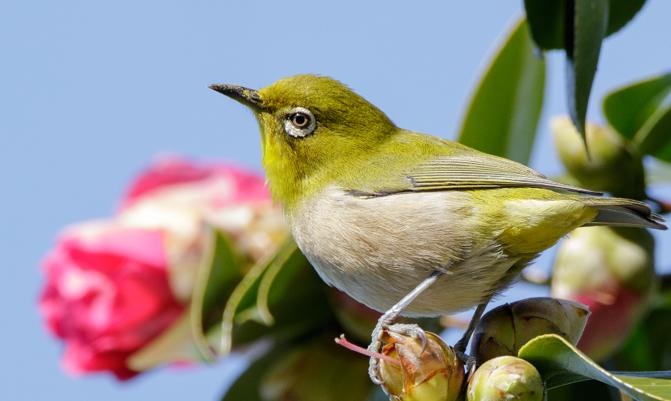Bird watching
Japan's avifauna is incredibly rich, with more than 600 species having been recorded here. More than 60% are migratory, therefore winter is the preferred birding season in Japan. This is the time for watching wintering Hooded and White-naped Cranes in addition to the native Red-crowned Crane.
Izu Islands
The stars of this cluster of islands as far as bird-watchers are concerned are Hachijojima and Miyakejima. Izu thrush make their homes in the gardens and forested areas of Hachijojima, where keen birders will also find phylloscopus ijimae and Izu robins. Other birds to look out for are white thrushes, Pleske's warblers, Pacific swifts and white-throated needletails. On Miyakejima, you'll find most of the same species as well as Owston's tits, Japanese black woodpigeons, Japanese pygmy woodpeckers, Eurasian wrens and Japanese white-eyes. Hachijojima can be reached in around ten hours by ferry from Tokyo, and Miyakejima can be reached in around six and a half hours.
Ogasawara Islands
It doesn't get much more remote than this. Known as the Galapagos of the Orient, this UNESCO World Heritage site is an archipelago that is technically part of Tokyo, but it will take you around 24 hours of ferry travel to reach. There's no airport and the ferry only runs four times a month, giving nature the space it needs to thrive. The islands are a favorite for birders because of the Bonin honeyeater, also known as the Bonin white-eye, a songbird endemic to Hahajima , one of the islands in the chain. There are also brown boobys and wedge-tailed shearwaters on Minamijima and a breeding ground for the rare Bryan's shearwater on Higashijima. Even the ferry ride offers a fantastic opportunity for birding, with red-footed boobys, Arctic skuas, Laysan albatrosses and Bonin petrels known to fly in the area.
Nansei Islands
This island chain stretches between Kyushu and Taiwan. Its subtropical environments attract species you won't find elsewhere in Japan, such as the cinnamon bittern. It's also home to species unique to these islands, including the Amami woodcock, and northern Okinawa's rare Pryer's woodpecker. But, no ornithologist should travel to the main island of Okinawa without trying to seek out the Okinawa rail. This reclusive, flightless bird was discovered in 1981 and is a prized spot for keen birders.

